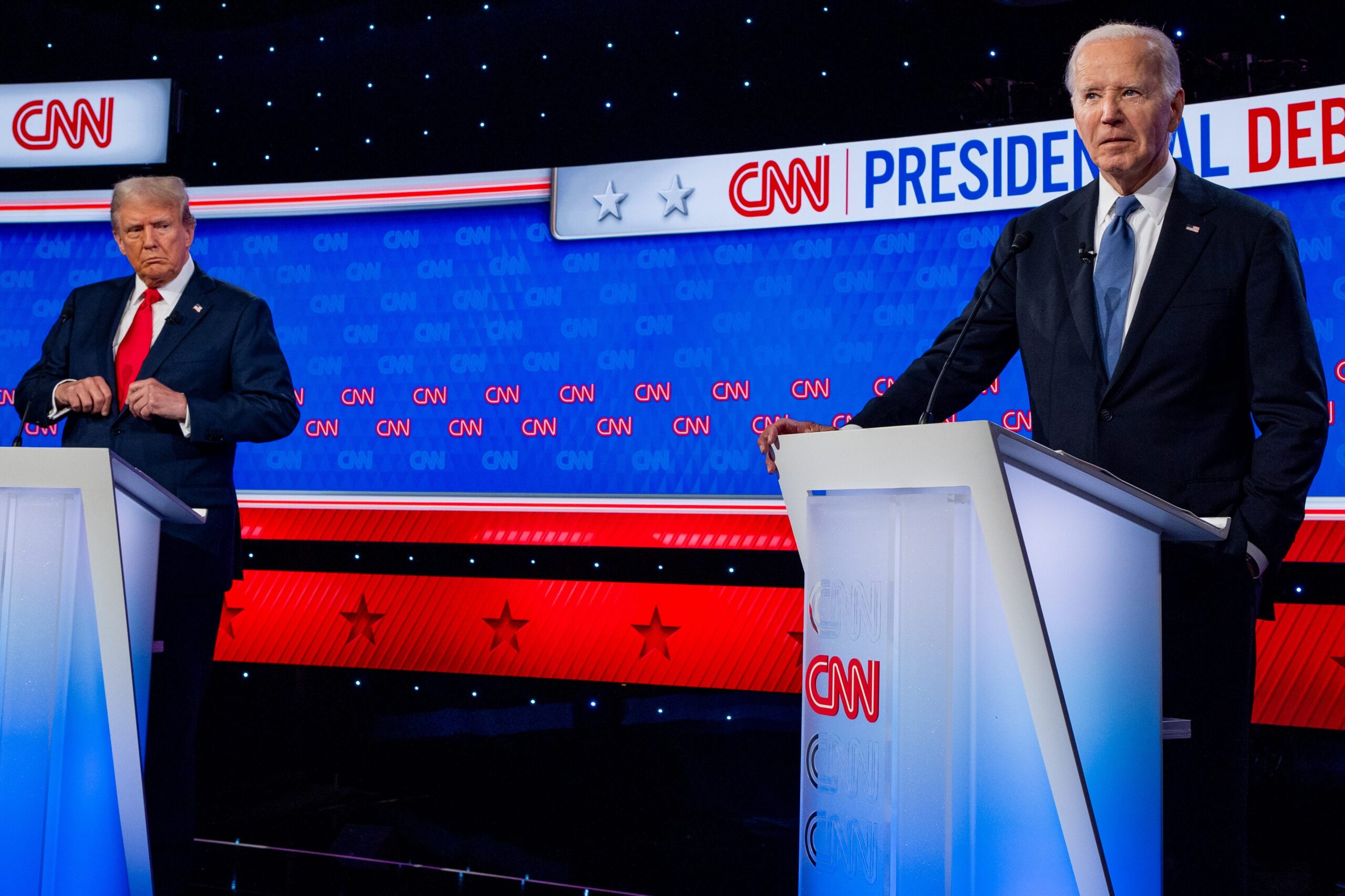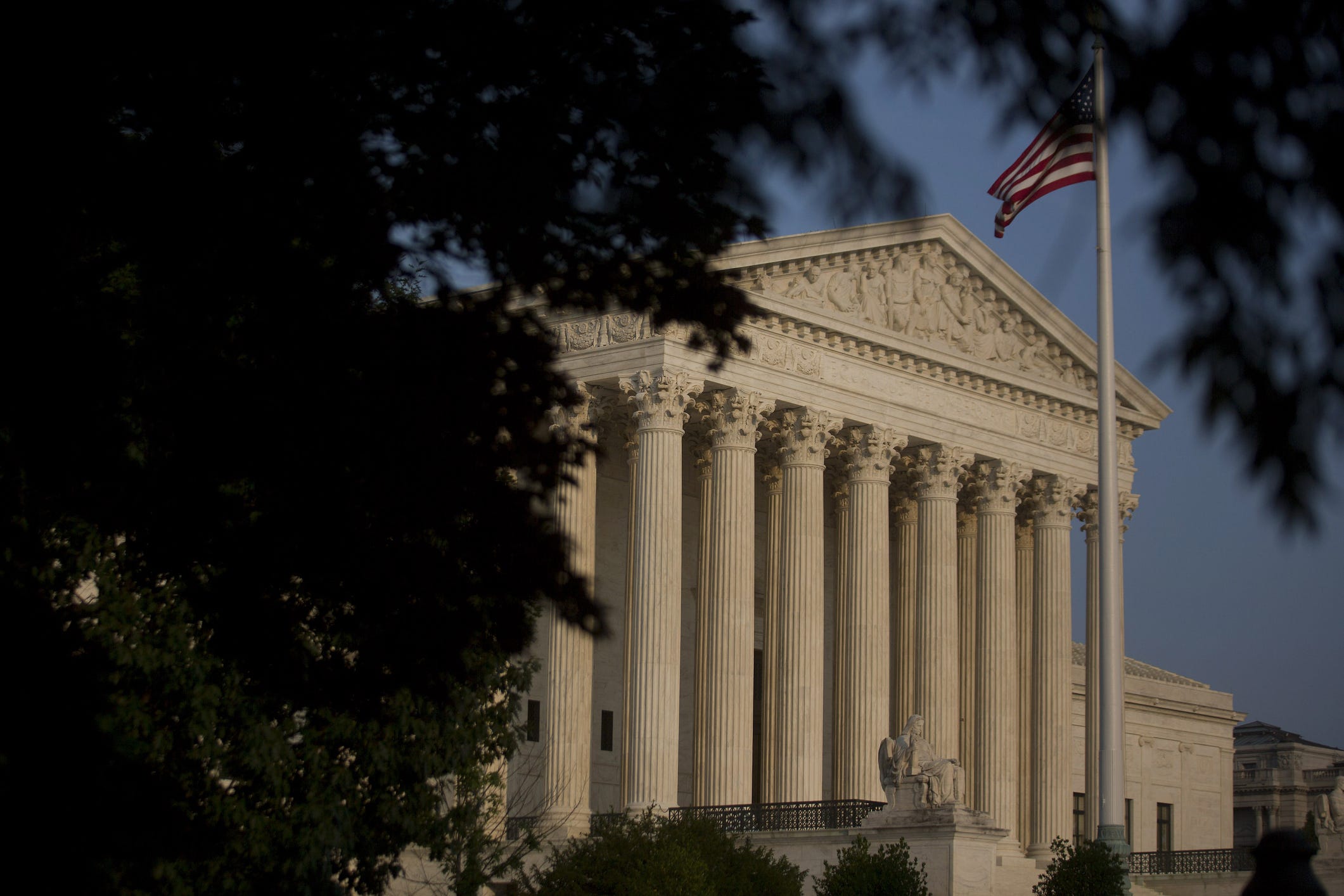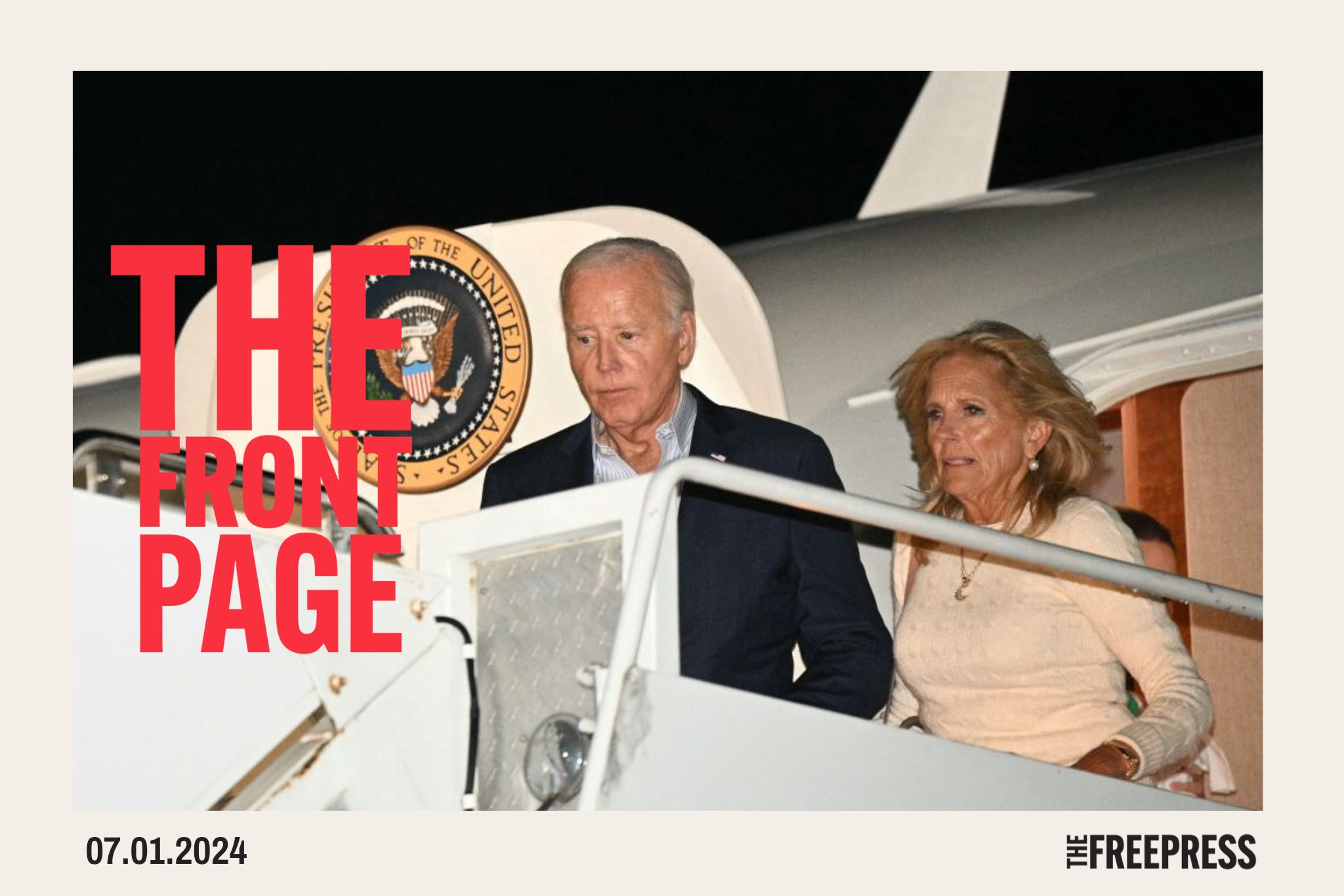Substacks
WHO IS RUNNING THE COUNTRY? Seymour Hersh

Readers of this column know that President Joe Biden’s drift into blankness has been ongoing for months, as he and his foreign policy aides have been urging a ceasefire that will not happen in Gaza while continuing to supply the weapons that make a ceasefire less likely. There’s a similar paradox in Ukraine, where Biden has been financing a war that cannot be won and refusing to participate in negotiations that could end the slaughter.
The reality behind all of this, as I’ve been told for months, is that the president is simply no longer there, in terms of understanding the contradictions of the policies he and his foreign policy advisers have been carrying out. America should not have a president who does not know what he has signed off on. People in power have to be responsible for what they do, and last night showed America and the world that we have a president who clearly is not in that position today.
The real disgrace is not only Biden’s, but those of the men and women around him who have kept him more and more under wraps. He is a captive, and as he rapidly diminished over the past six months. I have been hearing for months about the increasing isolation of the president, from his one-time pals in the Senate, who find that he is unable to return their calls. Another old family friend, whose help has been sought by Biden on key issues since his days as vice president, told me of a plaintive call from the president many months ago. Biden said the White House was in chaos and he needed his friend’s help. The friend said he begged off and then told me, with a laugh: “I would rather have a root canal procedure every day than go to work there.” A long retired Senate colleague was invited by Biden to join him on a foreign trip, and the two played cards and shared a drink or two on the Air Force One flight going out. The senator was barred by Biden’s staff from joining the return flight home.
I have been told the increasing isolation of the president on foreign policy issues has been in part the doing of Tom Donilon, whose younger brother, Michael, a key pollster and adviser in Biden’s 2020 presidential campaign and in the current re-election effort, was part of the team that spent much of the week briefing Biden for last night’s debate. Tom Donilon, who is 69, was President Biden’s national security adviser from 2010 to 2013 and sought unsuccessfully to be named as Biden’s director of the Central Intelligence Agency. He remains very much an insider.
Given Biden’s obvious decline in recent months, it is impossible for an outsider to understand why the White House agreed to any debates with Donald Trump before the election, let alone committing to the earliest presidential debate, the first of two, in modern history. One thought, I was told, was that if Biden performed well, as he had in his State of the Union speech in March, the issue of his mental capacity would be tabled. A poor performance would give the Biden campaign time to do a better prep job for the scheduled second debate.
There also was pressure from the major Democratic fundraisers, many of them in New York City, for the campaign to do something to counter the perception of the president’s obvious growing impairment, as reported and filmed by major media. I have been told that at least one foreign leader, after a closed meeting with Biden, told others that the president’s decline was so visible that it was hard to understand how, as it was put to me, “he could go through the rigors” of a re-election campaign. Such warnings were ignored.
What now? One of Washington political savants told me today that the Democratic Party is now facing “a national security crisis.” The nation is backing two devastating wars with a president who clearly is not up to it, he said, and it might be time to start drafting a resignation speech that would match or outdo the one given in March of 1968 by President Lyndon Johnson after his narrow victory over Senator Eugene McCarthy in the New Hampshire primary.
“They’re trapped,” he said of the senior advisers in the White House who hoped that Biden would somehow do well enough in last night’s debates to carry on, with the much-needed support of the more skeptical financial supporters in New York City.
Not everyone I talked to today agreed that it is time to force a Biden resignation and hope for the best at the Democratic National Convention in Chicago in August—to dump the ticket and seek new candidates. “My humble opinion,” one longtime contributor to the Democratic Party told me, “is to let the dust settle. Must examine the realistic options before some quick reaction creates an internal Democratic Party split with far-reaching consequences beyond 2024. Accept reality . . . 2024 is likely beyond recovery at this point. Too steep a hill to climb. Plan and execute a long-term plan to counter Mr. Orange and build a moderate platform for the recovery . . . and let Biden wander off to the Jersey Pine Barrens.”
A differing view was expressed by another political guru. “This is the age of social media—TikTok, Facebook, Instagram, and X—and a political campaign can go very far very fast.”
Whatever happens, we have a president—now fully unveiled—who just may not be responsible for what he does in the coming campaign, not to mention his actions in the Middle East and Ukraine.
Whatever happened to the 25th Amendment that authorizes the vice president and a majority of the Cabinet to declare the president incompetent? What is going on in the Biden White House?
Substacks
Supreme power grab Judd Legum

For thirty years, federal law has required commercial fishing boats to include a trained observer to ensure the vessel does not engage in overfishing or other prohibited practices. The law specifies that certain classes of boats pay the costs of their own monitors. But, it is silent on herring boats. For many years, the National Oceanic and Atmospheric Administration (NOAA) picked up the cost of the monitors for herring boats.
In 2020, however, the federal government began to run out of money for the monitoring program, and the Trump administration started requiring herring boats to share the costs of the federal monitors, which is about $700 per day. The herring boat operators sued, saying that the NOAA had exceeded its authority.
The Biden administration soon reversed the regulation and reimbursed 100% of the costs incurred by the herring boat operators under the Trump-era rule. Nevertheless, the case, Loper Bright Enterprises v. Gina Raimondo, made it all the way to the Supreme Court. There were simple, narrow ways to resolve the case:
1. The Supreme Court could have found that the case was moot because the herring boat operators had been fully reimbursed, and the rule had been reversed.
2. The Supreme Court could have found that charging the herring boat operators for federal monitors violated the clear language of the statute, which specified which types of boats could be charged.
Instead, on Friday, the Supreme Court used the case as a pretext for overturning a landmark decision, Chevron, that has been a cornerstone of federal regulation since 1984. This has been a longstanding priority for right-wing ideologues seeking to dismantle regulations protecting the environment, curbing abuses in financial markets, and ensuring the safety of consumers.
Why Chevron matters
Under amendments to the Clean Air Act passed in the 1970s, companies that modified or constructed a “stationary source” of air pollution were required to obtain permits. But a key question was left unanswered. What counts as one “source”? Is it an entire industrial complex? Or is it each individual source of air pollution within the complex?
The Reagan administration’s EPA issued a rule allowing companies to consider a grouping of industrial sources of pollution as a single stationary source. This allowed companies to create new sources of air pollution within a “bubble” as long as it was offset by reductions in admissions — or the decommissioning — of another source. The Reagan administration’s interpretation would make the process of reducing air pollution slower because companies could create new sources of air pollution without going through the permitting process.
An environmental group, the Natural Resources Defense Council (NRDC), sued, arguing that the EPA’s interpretation of the statute was impermissible. The case, known as Chevron v. NRDC, reached the Supreme Court in 1984.
In Chevron, the Supreme Court unanimously decided that when a statute contains an ambiguity, courts should defer to the judgment of the federal agency in resolving the ambiguity, as long as the agency’s action is “reasonable.” The Supreme Court found that the EPA acted reasonably and upheld its interpretation of the Clean Air Act.
Over the next 40 years, the Chevron decision has been cited over 18,000 times by federal courts. As the Chevron decision itself illustrates, it is not a particularly ideological decision. But Chevron deference is a critical tool that allows the government to address important and complex problems.
For example, in 1987, Congress, through the National Parks Overflights Act, directed the Department of the Interior, in coordination with the Federal Aviation Administration, to “provide for substantial restoration of the natural quiet and experience.” As Justice Kagan noted in her dissent in Loper Bright, the law left some important questions unresolved: “How much noise is consistent with “the natural quiet”? And how much of the park, for how many hours a day, must be that quiet for the “substantial restoration” requirement to be met?” Under Chevron, federal courts defer to the expertise of the people at the Department of the Interior who understand the nature of the park and what it would take to restore “natural quiet” — as long as the decisions made by the Department of the Interior were “reasonable.”
Other questions are even more technical. Kagan cites the Public Health Service Act’s requirement that the Food and Drug Administration (FDA) regulates “biological products,” including “proteins.” A recent lawsuit challenged the FDA’s determination that an “alpha amino acid polymer” is considered a “protein.” Chevron recognizes that the FDA has the expertise to make these kinds of determinations, not the courts.
Further, federal agencies like the FDA are accountable to the administration, which can be replaced by voters. Federal judges, on the other hand, receive lifetime appointments.
“A rule of judicial humility gives way to a rule of judicial hubris”
In Loper Bright, Chief Justice Roberts, writing for the majority, casts aside 40 years of judicial precedent. “Chevron is overruled,” Roberts declares.
This is fundamentally a power grab. Instead of deferring to the expertise of agencies to implement statutes in the face of inevitable ambiguities, the Supreme Court has empowered itself, and other federal courts, to do the job. “Chevron’s presumption is misguided because agencies have no special competence in resolving statutory ambiguities,” according to the majority. “Courts do.”
As a practical matter, it empowers any federal judge — including hundreds appointed by Trump — to strike down regulations by asserting that an agency misinterpreted a statutory ambiguity. Chevron itself is neutral because it protects the statutory interpretations of liberal and conservative administrations. But if your goal is to dismantle as many regulations as possible, getting rid of Chevron makes your task much easier.
The decision to overturn Chevron is particularly remarkable because it was based on a statutory interpretation. Roberts found that Chevron deference was actually prohibited by the Administrative Procedure Act, a law passed 80 years ago. But if Congress wanted to empower the courts, not agencies, to resolve statutory ambiguities, it could have passed a law repealing Chevron at any time between 1984 and today. But Congress chose not to do so. But the Supreme Court decided to award itself this power anyway.
The farce of Supreme Court nomination hearings
The decision to overturn Chevron was formally made on Friday. But the writing has been on the wall since former president Donald Trump appointed three Supreme Court Justices who were part of the ideological campaign to kill Chevron. Trump’s nominees were all asked about Chevron during their confirmation hearings, and all deliberately gave the impression that they would respect Chevron as precedent.
Chevron “is a precedent of the Supreme Court entitled to respect under the doctrine of stare decisis,” Justice Barrett said in response to written questions. Barrett refused to elaborate in any detail, claiming it “would not be appropriate for me to offer an opinion on abstract legal issues or hypotheticals.”
“As a Supreme Court Justice, if you were to make this decision to overturn Chevron, would you consider the implications on all of the cases in the U.S., and the rules and the uncertainty that it would create?” Senator Amy Klobuchar (D-MN) asked Justice Neil Gorsuch during his confirmation hearing. “Goodness, Senator, yes,” Gorsuch replied. Klobuchar asked Gorsuch about a previous opinion he wrote as a circuit court judge that criticized Chevron. Gorsuch insisted that he had not “prejudge[d]” the case and would “come at it with as open a mind as a man can muster.” He then signed onto a ruling that stated Chevron was wrong from the moment the decision was issued.
Justice Kavanaugh wrote a Harvard Law Review article in 2016 harshly criticizing Chevron. But during his confirmation process, he insisted that he respected Chevron as precedent. “Chevron is a precedent of the Supreme Court entitled to the respect due under the
law of precedent,” Kavanaugh wrote in response to written questions. “As I explained at the hearing, I have applied the Chevron doctrine in many D.C. Circuit cases over the last 12 years.” Kavanaugh then signed onto the majority opinion overturning Chevron, which cited his law review article.
Substacks
Will He? Or Won’t He? Plus. . . Oliver Wiseman

On today’s Front Page from The Free Press, Joe Nocera on how Anthony Fauci went from hero to zero, the Democrats pay the price for DEI, France’s rightward turn, and much more. But first, the latest on the president.
I hope some of you have looked up from the news over the past seventy-two hours. I haven’t. All screen-time limits have been out the window since Thursday’s debate. My eyes are bleeding and show no signs of stopping.
Since the moment Trump and Biden walked off that stage—or in Biden’s case, was escorted off by a wife who later, somehow, made matters worse when she praised him for answering every question—American politics has been stuck in limbo.
Will he? Or won’t he?
Every hour brings a new development. Obama backed Biden, posting that “bad debate nights happen.” Okay, Biden’s in! He’s definitely in. Then half of the The New York Times editorial page roster, as well as the paper itself in an editorial, called on Biden to quit. Okay, Biden’s out! Only a matter of time before he makes the announcement.
For those of you who have lives and better things to do other than doomscroll all weekend, a quick recap of what’s gone down as of press time:
Thirty minutes into the debate, when it was clear Biden was bombing, the first spin dropped: he has a cold.
On Friday, Biden managed to deliver prepared remarks, read from a teleprompter in front of a fired-up crowd of supporters—and this was supposed to be a sign that all was well and Thursday night was just a blip. Bob Woodward said it wasn’t a blip but a “political H-bomb.”
Meanwhile, in the Hamptons on Saturday, Biden reportedly needed a teleprompter for five-minute remarks at a rich guy’s house.
In a report on “the two Bidens,” White House aides explained to Axios’s Alex Thompson that from 10 a.m. to 4 p.m. the president is “dependably engaged.” (Good thing the job of the president only requires the hours of a dentist.)
The Biden campaign issued a memo citing snap polls immediately after the debate that suggested no major changes in public opinion. The memo also cautioned that “if we do see changes in polling in the coming weeks, it will not be the first time that overblown media narratives have driven temporary dips in the polls.” (Never mind that most polls and models show that Biden is already losing the race. And never mind the poll published Sunday that shows a jump in the percentage of voters who do not think Biden is mentally or physically fit for the job of president to 72 percent.)
The Biden campaign sent a fundraising email that included a chart showing that Biden leads other Democrats in head-to-head matchups against Trump. (The extraordinary thing about this is not that it shows Biden outperforming various untested Democrats, but that Biden’s team decided to include it in a fundraising email at all.)
The media pile-on continued throughout the weekend with everyone from the Times, the house organ of the Democratic Party, to The New Yorker (ditto), to The Economist adding to the chorus of voices calling for Biden to step down. (“It is sad to go to pieces like this, but we all have to do it,” wrote New Yorker editor David Remnick. Ouch.)
And here’s a taste of the enthusiasm from Democrats sticking by Biden. The best David Axelrod could muster was to post on X: “Unless the @POTUS, himself, decides to quit—which he won’t—that issue is settled. The discussion that is going on now was timely a year ago, when few wanted to have it. It’s largely irrelevant today.”
Democratic congressman Ro Khanna defended the president by comparing the leader of the free world to the fictional boxer Rocky Balboa: “Rocky wasn’t the most eloquent in speech. But he was a fighter.” Is this supposed to make us feel better?
By Sunday, Biden had spun through his fundraisers and made it to Camp David for a prearranged family meeting, complete with a photoshoot with Annie Leibovitz for Vogue. Biden was reportedly eager for ideas from family and advisers on how to proceed and is mulling an interview or press conference to address the age issue head on.
According to some accounts, the strongest voices urging Biden to stay the course are his son Hunter, who “wants Americans to see the version of his father that he knows—scrappy and in command of the facts—rather than the stumbling, aging president Americans saw on Thursday night.” The family blames Biden’s top advisers for the mess and are calling for heads to roll.
Amid all the furious spin, some 300 million Americans are wondering: who will be on the ballot come November? Who is running the country right now?
We don’t know the answer to either.
Is this all too negative? To use the Bidenworld parlance, are Democrats who want Biden to drop out just the “bedwetting brigade”? On Friday, Olivia Reingold headed to New York City’s Stonewall Inn, where Biden commemorated a new monument celebrating gay pride, and got another perspective: that the president’s superfans are standing by him after Thursday’s disaster.
Are they right to keep calm and carry on? Or do those inside the Biden bubble have a hearing problem? Here’s Olivia’s dispatch from “Inside the Biden Bubble.”
On the record, everyone important in the Democratic Party is behind Joe Biden. Privately, it’s a very different story.
Peter Savodnik spent the weekend speaking to more than 20 Democratic activists, strategists, and donors who are panicked and plotting in the event that Joe Biden announces he isn’t seeking re-election.
“Secretly, most of the donors are worried sick and would like to see someone else on the ticket,” a Democratic fundraiser told The Free Press. “They’re not going to speak against him publicly, but they’re very worried—they’re sending specific suggestions about who should replace him.”
I’m allowing myself one more plug for a response to Niall Ferguson’s conversation-driving Free Press essay on why “We’re All Soviets Now.” And only because it’s from the Grey Lady’s always-interesting conservative-in-residence, Ross Douthat. His takeaway: conservatives should be optimists, not doomers. (New York Times)
And for more cheeriness about the United States—we need it right now—here are six charts from Bruce Mehlman that will have you yelling, “America, fuck yeah!” (Age of Disruption)
Foreign officials knew from their meetings with the president what the White House has been trying to hide—and what we all saw on Thursday night. “The reading in Europe is that this has been an unmitigated disaster.” (WSJ)
“At night, I prayed I wouldn’t survive to the next day.” A Ukrainian describes life as a prisoner of war in Russia. (Spiegel International)
In the latest evidence that nothing is safe from attack in the culture wars, a scheme funded by the universally beloved Dolly Parton to give free books to kids has been attacked as “white saviorism.” (The Telegraph)
There are lots of lessons for the far left from Jamaal Bowman’s primary defeat last Wednesday, argues Michael Powell. Whether they’ll bother to learn them is another matter. (The Atlantic)
Top hospitals are offering Long Covid clinics. After studying these programs for a new paper, Vinay Prasad suspects they are little more than scams. (Substack)
Kanye West, the prolific rapper turned prolific antisemite was spotted in Russia this past weekend, where he reportedly shopped, checked out the Red Square, and celebrated the birthday of his fashion designer friend. (Times of Israel)
Almost half a decade after the start of the pandemic, just 6 percent of federal workers are working full-time in their offices and 30 percent are fully remote. Some government agencies are using just 10 percent of their office space. (Washington Post)
Kinky Friedman, the satirical musician, author, and onetime Texas gubernatorial candidate, died last week at 79. (Variety) If you want to unplug from the current news cycle, I recommend Matt Labash’s 2006 profile of Friedman on the campaign trail.
Up next, Joe Nocera reads Anthony Fauci’s new memoir—and is struck by the gap between the public health bureaucrat who got everything right back in the 1980s and the man who flubbed it when Covid hit in 2020.
In his new memoir, On Call, Anthony Fauci devotes tremendous energy and space to his role during the AIDS crisis—with good reason. Despite having spent, at that point, more than a decade as a government health bureaucrat, the 44-year-old scientist could see that the federal government wasn’t devoting enough resources to AIDS research, and that the hurdles required to get a new drug approved made little sense when so many young gay men were dying without access to drugs that just might help them stay alive.
Fauci successfully fought for more research dollars, and he also helped tear down those hurdles so that AIDS patients could try drugs even though they didn’t have the final stamp of approval from the Food and Drug Administration. He portrays himself as a hero in his book—and he was.
Fauci also devotes tremendous energy and space to his role during the Covid crisis. By then, he was 79 years old, with 52 years in government, including the last 36 as the head of the National Institute of Allergy and Infectious Diseases. He was the government’s chief scientific voice during the pandemic, and he again portrays himself as a hero of the crisis in his book.
But this time he absolutely was not. In fact, his role in the crisis is a big reason why public health officials are now held in such low esteem.
The man who tackled the AIDS crisis was very different from the man who advised presidents—and the country—about Covid-19. The country would have been far better served during the pandemic with the man I’ve come to think of as “AIDS Fauci” rather than “Covid Fauci.” Read on for the full tale of two Faucis.
→ Biden Democrats hobbled by DEI: Over the weekend, Spectator columnist Melissa Chen posted on X that “one of the major reasons the Democrats are in this bind is because of DEI.” She argued that the diversity, equity, and inclusion craze, with its emphasis on identity over capability, is what forced Biden’s team to pick Kamala Harris as his running mate four years ago. “Instead of being responsive to the desires of ordinary people,” Chen writes, “Biden unnecessarily hamstrung himself—and the rest of the country—by announcing the criteria that his VP will be a BIPOC woman. Yes, this was 2020 when everybody was trying to outperform everybody else on how anti-racist they were. Crazy times.” As a result, “we ended up with an inauthentic word salad VP whom no one likes. And the Dems are finding themselves paying the price for not bothering to listen to the people. The stakes are high for the choice of who gets to occupy the highest office in the land. They used DEI to pick a VP, and they eschewed the normal primary process which allows feedback from voters. What we got was a sanitized, highly managed political process, where the candidate of choice was foisted upon us.” Her comments echo that of Free Press columnist Kat Rosenfield, who predicted back in May that this would happen. Sadly for the Dems, the polls suggest that 59-year-old Harris has an even slimmer chance of beating Donald Trump than Joe Biden. “Buckle up,” Chen concludes in her post, “it’s going to be a wild ride till November.”
→ France goes right: Marine Le Pen’s far-right National Rally party won 34 percent of the vote in the first round of France’s parliamentary elections yesterday. For weeks, polls had predicted Emmanuel Macron’s centrist bloc would be surpassed by the radical right and left—and that is exactly what early projections suggest happened. The far-left New Popular Front won 28 percent of the vote and Macron’s Ensemble bloc came third with 20 percent. This outcome is exactly the result the philosopher Bernard-Henri Lévy feared when he wrote in The Free Press last week that “we urgently need a union of principled democrats of the left, the right, and the center.” France will vote again this Sunday: in districts where no candidate secured 50 percent in the first round, any candidate who won more than 12.5 percent goes to the second vote. And so the week ahead will involve horse trading and unpredictable three-way votes before we learn how many seats Le Pen’s party really gets, and whether Macron and the far right will have to find a way to share power.
Oliver Wiseman is a writer and editor for The Free Press. Follow him on X @ollywiseman.
To support The Free Press, become a paid subscriber today:
And if you’re enjoying The Front Page, consider forwarding it to someone else you think might like it.
The Free Press earns a commission from any purchases made through all book links in this article.
Substacks
June 30, 2024 Heather Cox Richardson
In addition to his comments about Russia in Ukraine, Trump said something else in Thursday’s CNN presentation that should be called out for its embrace of one of the darkest moments in U.S. history.
In response to a question about what the presidential candidates would say to a Black voter disappointed with racial progress in the United States, President Joe Biden pointed out that, while there was still far to go, more Black businesses were started under his administration than at any other time in U.S. history, that black unemployment is at a historic low, and that the administration has relieved student debt, invested in historically Black colleges and universities, and is working to provide for childcare costs, all issues that affect Black Americans.
In contrast, Trump said: “As sure as you’re sitting there, the fact is that his big kill on the Black people is the millions of people that he’s allowed to come in through the border. They’re taking Black jobs now and it could be 18. It could be 19 and even 20 million people. They’re taking Black jobs and they’re taking Hispanic jobs and you haven’t seen it yet, but you’re going to see something that’s going to be the worst in our history.”
Trump was obviously falling back on the point he had prepared to rely on in this election: that immigration is destroying our country. He exaggerated the numbers of incoming migrants and warned that there is worse to come.
But what jumped out is his phrase: “They’re taking Black jobs and they’re taking Hispanic jobs.”
In U.S. history it has been commonplace for political leaders to try to garner power by warning their voters that some minority group is coming for their jobs. In the 1840s, Know-Nothings in Boston warned native-born voters about Irish immigrants; in 1862 and 1864, Democrats tried to whip up support by warning Irish immigrants that after Republicans fought to end enslavement, Black Americans would move north and take their jobs. In the 1870s, Californian Denis Kearney of the Workingman’s Party drew voters to his standard by warning that Chinese immigrants were taking their jobs and insisted: “The Chinese Must Go!”
And those were just the early days.
But while they are related, there is a key difference between these racist appeals and the racism that Trump exhibited on Thursday. Politicians have often tried to get votes by warning that outsiders would draw from a pool of jobs that potential voters wanted themselves. Trump’s comments the other night drew on that racism but reached back much further to the idea that there are certain jobs that are “Black” or “Hispanic.”
This is not a new idea in the United States.
“In all social systems there must be a class to do the menial duties, to perform the drudgery of life,” South Carolina senator James Henry Hammond told his colleagues in 1858. “That is, a class requiring but a low order of intellect and but little skill. Its requisites are vigor, docility, fidelity. Such a class you must have, or you would not have that other class which leads progress, civilization, and refinement. It constitutes the very mud-sill of society and of political government; and you might as well attempt to build a house in the air, as to build either the one or the other, except on this mud-sill.”
Capital produced by the labor of mudsills would concentrate in the hands of the upper class, who would use it efficiently and intelligently to develop society. Their guidance elevated those weak-minded but strong-muscled people in the mudsill class, who were “happy, content, unaspiring, and utterly incapable, from intellectual weakness, ever to give us any trouble by their aspirations.”
Southern leaders were smart enough to have designated a different race as their society’s mudsills, Hammond said, but in the North the “whole hireling class of manual laborers and ‘operatives,’ as you call them, are essentially slaves.” This created a political problem for northerners, for the majority of the population made up that lower class. “If they knew the tremendous secret, that the ballot-box is stronger than ‘an army with banners,’ and could combine, where would you be?” Hammond asked his colleagues who insisted that all people were created equal. “Your society would be reconstructed, your government overthrown, your property divided.”
The only true way to look at the world was to understand that some people were better than others and had the right and maybe the duty, to rule. “I repudiate, as ridiculously absurd, that much-lauded but nowhere accredited dogma of Mr. Jefferson, that ‘all men are born equal’” Hammond wrote, and it was on this theory that some people are better than others that southern enslavers based their proposed new nation.
“Our new government is founded…upon the great truth that the negro is not equal to the white man; that slavery subordination to the superior race is his natural and normal condition. This, our new government, is the first, in the history of the world, based upon this great physical, philosophical and moral truth,” Alexander Stephens, vice president of the Confederacy, told supporters.
Not everyone agreed. For his part, rising politician Abraham Lincoln stood on the Declaration of Independence. Months after Hammond’s speech, Lincoln addressed German immigrants in Chicago. Arguments that some races are “inferior,” he said, would “rub out the sentiment of liberty in the country, and…transform this Government into a government of some other form.” The idea that it is beneficial for some people to be dominated by others, he said, is the argument “that kings have made for enslaving the people in all ages of the world…. Turn in whatever way you will—whether it come from the mouth of a King, an excuse for enslaving the people of his country, or from the mouth of men of one race as a reason for enslaving the men of another race, it is all the same old serpent.”
According to the mudsill theory, he said the following year, “a blind horse upon a tread-mill, is a perfect illustration of what a laborer should be—all the better for being blind, that he could not tread out of place, or kick understandingly. According to that theory, the education of laborers, is not only useless, but pernicious, and dangerous.” He disagreed. “[T]here is not, of necessity, any such thing as the free hired laborer being fixed to that condition for life.”
He went on to tie the mudsill theory to the larger principles of the United States. “I should like to know if taking this old Declaration of Independence, which declares that all men are equal upon principle and making exceptions to it, where will it stop,” he said. “If that declaration is not the truth, let us get the Statute book, in which we find it and tear it out!” To cries of “No, no,” he concluded to cheers: “Let us stick to it then. Let us stand firmly by it.”
One hundred and sixty-six years later, Black and Hispanic social media users have answered Trump’s statement about “Black jobs” and “Hispanic jobs” with photos of themselves in highly skilled professional positions. But while they did so with good humor, they were illustrating for the modern world the principle Lincoln articulated: in the United States there should be no such thing as “Black jobs” or “Hispanic jobs.”
Such a construction directly contradicts the principles of the Declaration of Independence and ignores the victory of the United States in the Civil War. Anyone who sees the world through such a lens is on the wrong side of history.
—
Notes:
https://www.cnn.com/2024/06/27/politics/read-biden-trump-debate-rush-transcript/index.html
-

 Awakening Video10 months ago
Awakening Video10 months agoThis is What Happens When You Try to Report Dirty Cops
-

 Substacks3 months ago
Substacks3 months agoTHE IRON-CLAD PIÑATA Seymour Hersh
-

 Substacks9 months ago
Substacks9 months agoThe Russell Brand Rorschach Test Kathleen Stock
-

 Substacks10 months ago
Substacks10 months agoA real fact-check of Trump’s appearance on Meet the Press Judd Legum
-

 Substacks8 months ago
Substacks8 months agoLetter to the Children of Gaza – Read by Eunice Wong Chris Hedges








